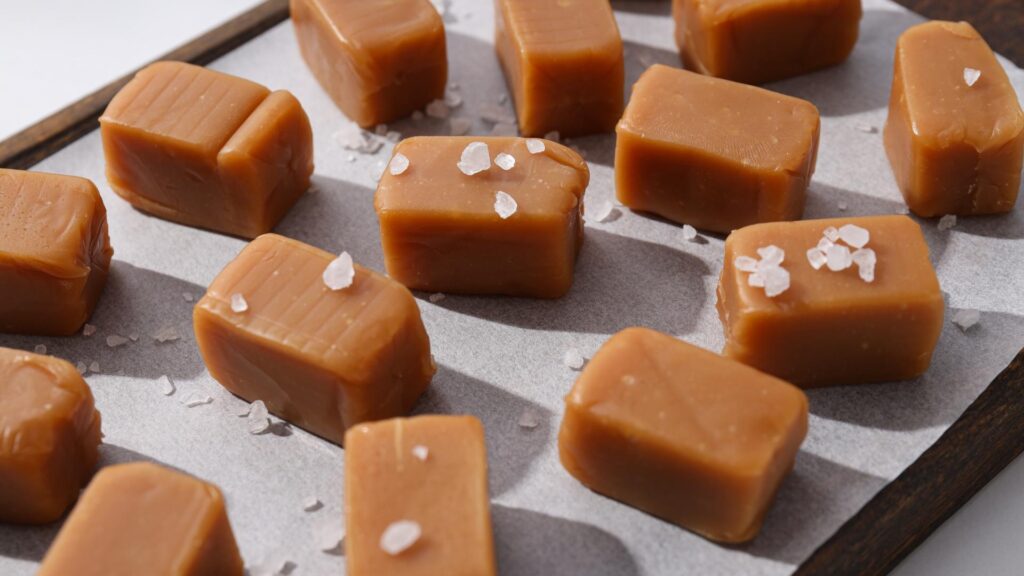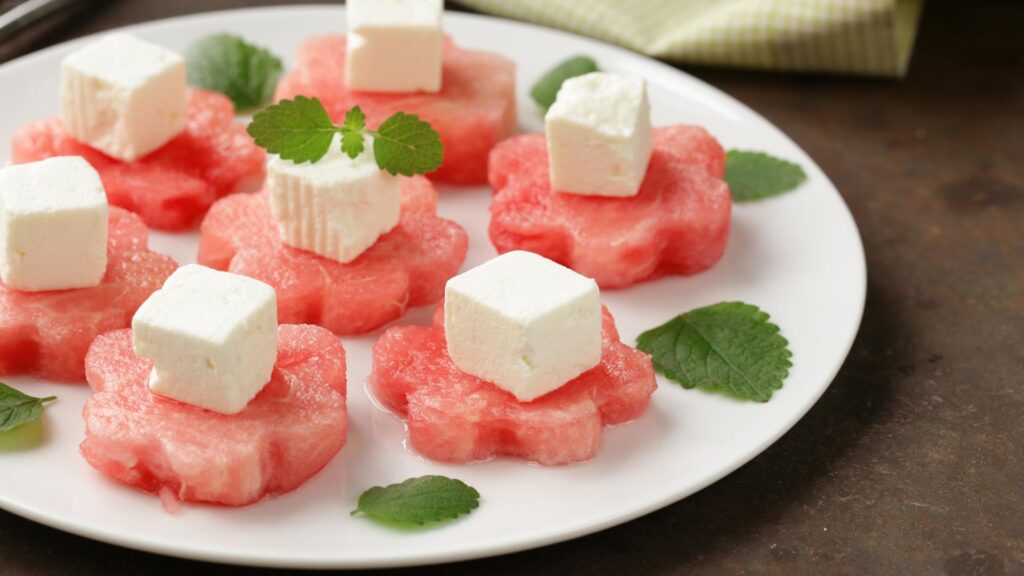In the world of culinary arts, achieving a harmonious blend of sweet and salty is akin to creating a symphony of flavors. As we embark on this culinary journey, our aim is not only to enhance the taste of a dish but to elevate the entire dining experience. When we master this balance, we unlock a realm of tastes that tantalize the senses, leaving a lasting impression on every palate. Let’s explore the art of balancing sweetness and saltiness, delving into the nuances of each ingredient and their impact on our food.
- 1 The Science of Taste: Understanding Flavor Profiles
- 2 Techniques for Achieving the Perfect Balance
- 3 Creative Uses of Ingredients for Flavor Enhancement
- 4 Conclusion: Embracing the Art of Flavor Balance
-
5
FAQ
- 5.1 What is the importance of balancing sweet and salty flavors in a recipe?
- 5.2 How can I determine the right amount of salt to add to a sweet dish?
- 5.3 What are some common ingredients that naturally balance sweet and salty flavors?
- 5.4 Are there any specific cuisines known for their sweet and salty combinations?
- 5.5 Can you provide a tip for adjusting a dish if it becomes too sweet or too salty?
The Science of Taste: Understanding Flavor Profiles
Before diving into the kitchen, it’s essential to understand the science of taste. Our taste buds are primed to identify five main tastes: sweet, salty, sour, bitter, and umami. Each plays a crucial role in shaping our perception of flavors. While sweet and salty are often highlighted, combining them with the other three can create a well-rounded dish.
Sweetness is usually derived from sugars found in fruits, honey, and certain vegetables. It has an innate ability to soften the intensity of sour and bitter notes and can bring out the best in umami flavors. On the other hand, salt is a flavor enhancer that can bring depth to dishes. It amplifies sweetness while toning down bitterness, making it indispensable in almost every recipe.
To achieve a balanced flavor profile, it’s crucial to understand how these flavors interact. When used judiciously, they can transform a mundane dish into something extraordinary. For instance, a pinch of salt in a sweet dessert can highlight the flavors of chocolate or caramel, while a dash of sugar in a savory sauce can mellow out excessive acidity.
As we experiment in our kitchens, let us remember that balance is not about equal parts but about creating harmony. The goal is to let each ingredient shine without overpowering others, resulting in a deliciously balanced culinary masterpiece.
Techniques for Achieving the Perfect Balance
In our quest to master the sweet and salty balance, we must adopt certain techniques that can elevate our cooking. By understanding how to manipulate these tastes, we can create dynamic dishes that captivate and surprise. Here are some tried-and-tested methods to help us achieve that perfect balance:
-
Layering Flavors: One effective technique is to layer flavors by adding them at different stages of the cooking process. For example, start with a savory base and gradually introduce sweetness towards the end. This approach allows each flavor to develop fully and interact harmoniously.
-
Balancing Act: When crafting a dish, consider the primary flavors and how they might be enhanced by subtle hints of sweet or salty. A sweet glaze on a salty roast or a sprinkle of salt on a sweet chocolate dessert can create an unexpected yet delightful contrast.
-
Tasting and Adjusting: The most critical tool in a chef’s arsenal is their palate. As we cook, tasting and adjusting seasoning can make all the difference. Don’t shy away from adding a touch more sugar or salt until the desired balance is achieved.
-
Incorporate Umami: Harness the power of umami to complement sweet and salty flavors. Ingredients rich in umami, like tomatoes, soy sauce, or mushrooms, can add depth and complexity to both sweet and savory dishes.
By experimenting with these techniques, we not only refine our skills but also expand our repertoire. Every recipe becomes an opportunity to discover new flavors, creating dishes that are not just meals but experiences.
Creative Uses of Ingredients for Flavor Enhancement

Crafting the ideal balance of sweet and salty isn’t just about techniques; it’s also about choosing the right ingredients. By thoughtfully selecting and combining ingredients, we can amplify flavors and create a memorable taste experience. Here are some ingredients that can help enhance flavor in your dishes:
-
Honey and Salt: This classic combination can be used in both savory and sweet dishes. A drizzle of honey on roasted vegetables with a sprinkle of salt can elevate the flavor profile.
-
Fruits and Herbs: Use fruits like pineapple or mango in savory dishes to introduce sweetness. Pair them with herbs like basil or mint, which can add a refreshing contrast to the flavors.
-
Caramel and Sea Salt: This duo has become a popular favorite in desserts for its perfect balance. The sweetness of caramel pairs beautifully with the salty crunch of sea salt, offering a multifaceted taste.
-
Citrus and Soy: Incorporate citrus juices like lemon or lime in sweet dishes to bring a hint of sour, and a splash of soy sauce in savory dishes to introduce umami.
-
Nuts and Chocolate: Whether in a savory sauce or a sweet dessert, the bitter notes of dark chocolate combined with the salty tang of nuts can create an interesting flavor dynamic.
By thinking outside the box and experimenting with these ingredients, we can discover innovative ways to play with flavors. The key is to be open to new combinations and to embrace the unexpected results. In doing so, we not only enhance our dishes but also enrich our creative culinary journey.
Conclusion: Embracing the Art of Flavor Balance

As we venture further into the world of cooking, it’s crucial to remember that achieving the perfect balance of sweet and salty is not a destination but an ongoing journey. With each dish we create, we have the opportunity to explore a spectrum of flavors, continuously refining our skills and deepening our understanding of taste.
Our exploration of flavors is driven by curiosity and creativity. By mastering the art of balancing sweetness and saltiness, we open doors to endless possibilities in the kitchen. We become alchemists, transforming simple ingredients into culinary masterpieces that evoke emotion, tell stories, and create lasting memories.
The key takeaway from our journey is the importance of embracing experimentation and trusting our instincts. Each recipe is a canvas, and every flavor is a brushstroke. As we continue to hone our craft, we become more attuned to the nuanced interplay of tastes, allowing us to craft dishes that delight and surprise.
In embracing the art of flavor balance, we celebrate not just the final dish but the creative process that brings it to life. Let us carry forward the skills and insights gained, fostering a lifelong love affair with the culinary arts, one delicious and balanced bite at a time.
FAQ
What is the importance of balancing sweet and salty flavors in a recipe?
Balancing sweet and salty flavors in a recipe is crucial because it enhances the overall taste experience. When these flavors are in harmony, they can highlight the best qualities of each ingredient, leading to a more satisfying and complex dish. Achieving the right balance can also prevent one flavor from overpowering the other, ensuring a well-rounded flavor profile.
How can I determine the right amount of salt to add to a sweet dish?
Determining the right amount of salt in a sweet dish involves taste testing and gradually adding small amounts. Start with a pinch and taste the dish to see how the flavors interact. The salt should enhance the sweetness without becoming noticeable as a separate flavor. Remember that it’s easier to add more salt than to correct a dish that’s become too salty.
What are some common ingredients that naturally balance sweet and salty flavors?
Common ingredients that naturally balance sweet and salty flavors include honey, soy sauce, salted caramel, and certain cheeses like feta or blue cheese. These ingredients possess inherent sweet or salty characteristics that can complement the opposite flavor in a dish, making them excellent choices for achieving balance.
Are there any specific cuisines known for their sweet and salty combinations?
Yes, several cuisines are known for their adept use of sweet and salty combinations. Asian cuisines, such as Thai and Chinese, often incorporate this balance with dishes like sweet and sour chicken or teriyaki sauce. Mediterranean cuisine also frequently explores this balance, using ingredients like figs and olives or honey and feta.
Can you provide a tip for adjusting a dish if it becomes too sweet or too salty?
If a dish becomes too sweet, you can adjust it by adding a small amount of salt or an acidic ingredient like lemon juice to counterbalance the sweetness. Conversely, if it’s too salty, incorporating sweet elements like sugar, honey, or a sweet fruit can help neutralize the saltiness. Always add these adjustments gradually, tasting as you go.
